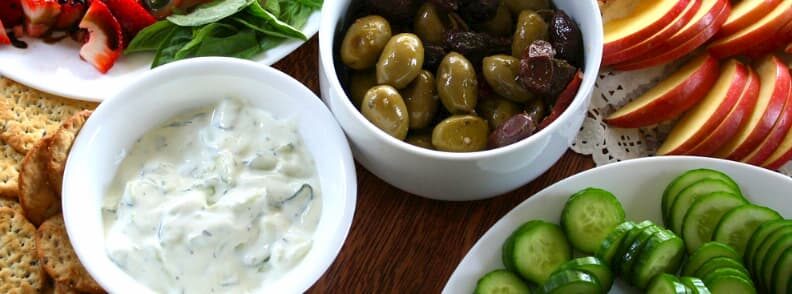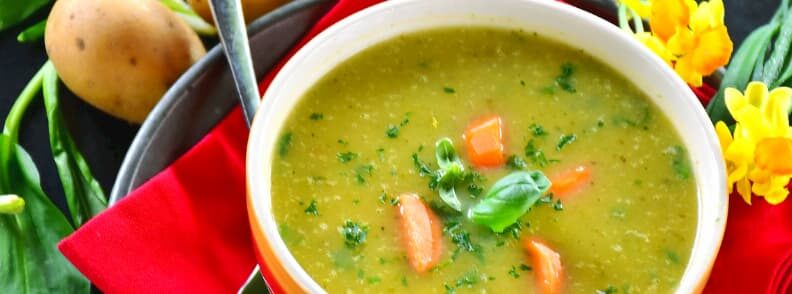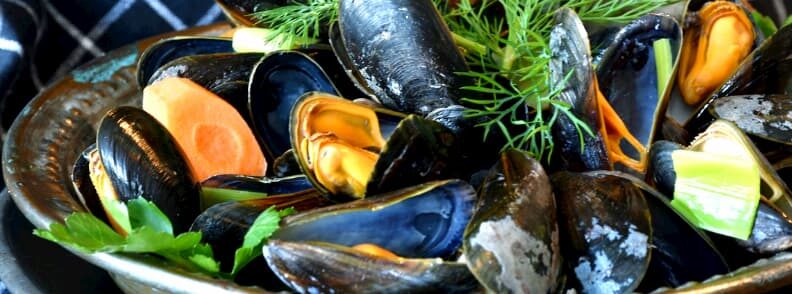Welcome to the wonderful world of Greek cuisine! Greek food and drinks are beloved all over the world for their delicious flavors, rich history, and unique cultural significance. In this article, we will take a deep dive into the many facets of good Greek food and drink, from traditional recipes and popular dishes to the fascinating history and cultural importance of Greek cuisine.
Greek food is a testament to the rich and diverse history of the country. The cuisine has been influenced by a variety of cultures over the centuries, including Ottoman, Italian, and French, among others. Greek food is characterized by its simplicity, freshness, and the use of high-quality ingredients, such as olive oil, fresh herbs, and vegetables.
Greek food and drink are an integral part of Greek culture and play a significant role in everyday life. Whether it’s enjoying a cup of strong Greek coffee at an Ellinikos café, savoring a typical Greek breakfast of yogurt and honey, or indulging in the rich flavors of moussaka and souvlaki, food is a source of pride and a way of bringing people together in Greece.
The purpose of this article is to provide a comprehensive guide to food and drink in Greece, covering everything from the most popular dishes and traditional recipes to the best places to eat and drink in Greece. We will explore the top 100 Greek foods, traditional Greek drinks both alcoholic and non-alcoholic, and the best places to try them, including top Kalamata food and drink spots. We will also delve into the history of Greek cuisine, the importance of food and drink in Greek culture, and fun facts about Greek cuisine.
So, whether you’re a foodie looking for the next delicious culinary experience, a traveler eager to explore the flavors of Greece, or simply curious about the history and culture of Greek cuisine, this article is for you. Join us on a gastronomic journey through the world of Greek food and drink, and discover the delicious flavors and fascinating history of one of the world’s most beloved cuisines.
Step into a traditional Greek taverna!
Welcome to our Greek taverna, where you will taste mouth-watering Greek traditional food and delicious drinks in Greece! Please, sit down at the shaded table over there, it has the most beautiful view of the sea in this area.
My name is Mirela and I will be your waitress today. Here is our menu with all the traditional Greek foods we prepare with local products. In the end, you will also find our popular Greek drinks, from which I strongly recommend strong Greek coffee. Please have a look, I’ll be right back with some cold water for you.

Traditional Greek breakfast
When it comes to Greek cuisine, the traditional breakfast dishes are often overlooked, but they are certainly worth exploring. Greek breakfast culture is centered around simple yet delicious dishes that are packed with flavor and nutrients to fuel your day. Have a look at the best Greek breakfast foods:
Koulouri
Bread ring covered in sesame seeds
Yaourti me meli
Greek yogurt drizzled with honey and sprinkled with walnuts
Omeletta
Fried eggs, spinach, bell peppers, onions, and cheese
Strapatsada
Fried eggs with tomatoes
What is a typical Greek breakfast?
Breakfast in Greece is typically a light meal, as lunch is the main meal of the day. The meal usually consists of bread, cheese, and some sort of drink. Greeks are also known for their love of coffee, so you will find that many breakfast spots serve a variety of coffee drinks to start your day off right.

Greek appetizers and meze
Greek cuisine is known for its savory and flavorful dishes, and one of the most enjoyable parts of a Greek meal is the meze or appetizer. Meze are small dishes that are typically served before the main course, and they can range from simple to complex, savory to sweet, and everything in between. In this section, we’ll explore the world of Greek appetizers and meze, including some of the most popular dishes, types of meze, salads, and traditional dips and spreads.
Salads
Horiatiki (Greek salad)
Tomatoes, cucumbers, peppers, onions, feta cheese, Kalamata olives, olive oil, and lemon juice
Spreads
Taramasalata
Fish roe, olive oil, lemon juice
Melitzanosalata
Eggplant, red onion, garlic, parsley, olive oil, lemon juice
Dakos
Dry barley rusk, tomatoes, feta cheese, capers, olive oil, and aromatic herbs
Skordalia
Potato and garlic spread
Tyrokafteri
Spicy cheese spread
Dips
Tzatziki
Greek yogurt, cucumber, garlic, dill, and olive oil; usually served with pita bread, vegetables, or grilled meats
Greek fava dip
Yellow split peas, red onions, garlic, thyme, olive oil, and lemon juice
Tirokafteri
Feta cheese, roasted red peppers

Appetizers (Meze)
Saganaki
Fried cheese dish, typically made with feta or kefalograviera cheese
Florina bell peppers
Roasted red bell peppers, stuffed with feta cheese and aromatic herbs; olive oil, and vinegar
Kalamarakia
Deep-fried squid covered in batter, served with lemon
Lakerda
Pickled small fish (bonito)
Kolokythoanthoi
Zucchini, stuffed with rice; aromatic herbs
Spanakopita
A savory pie filled with spinach, feta cheese, and onions
Tiropita
Greek pie with feta cheese filling
Olives with olive oil
Kalamata olives, extra-virgin olive oil

Soups
Avgolemono
Broth, egg yolk, chicken, rice, lemon juice
Kotosoupa
Broth, chicken, noodles
Patsa
Greek tripe soup
Hortosoupa
Traditional Greek food from broth, with carrots, cabbage, zucchini, onions, and potatoes
Fasolada
Broth, beans, tomatoes, carrots, onions, celery, olive oil, aromatic herbs
Faki
Broth, lentils, smoked herring, vinegar
Psarosoupa
Broth, fish, carrots, zucchini, celery, onions, potatoes

Traditional main Greek dishes
Greece is a country renowned for its rich cultural heritage, and its cuisine is no exception. Greek food is a perfect blend of Mediterranean and Middle Eastern flavors and spices. In this section of our Greek menu, we’ll explore the top Greek main dishes, including classic Greek meat dishes, traditional Greek seafood dishes, and vegetarian Greek dishes, as well as traditional Greek sides.
Classic Greek meat dishes
Gyros
Slow-roasted pork, chicken, or lamb on a spit, sliced and served on a pita with tomatoes, onions, and tzatziki sauce
Souvlaki
Pork, chicken, or need meat marinated in oregano, olive oil, and lemon juice; grilled on skewers, with a side of tzatziki, tomatoes, onions, and pita bread
Kleftiko
Slow-baked lamb, marinated in garlic and lemon juice and served with potatoes
Youvetsi
Lamb, baked in a clay pot and served with manestra (local risoni-like pasta)
Paidakia
Grilled lamb chops served with lemon
Loukaniko
Lamb/pork sausage with orange zest, leeks
Stifado (Corfu Island specialty)
Meat stew, shallots, red wine sauce, and cinnamon
Soutzoukakia
Sausages in red wine sauce
Spetsofai
Sausages, peppers, onions, wine sauce
Kokoretsi
Grilled lamb intestines, stuffed with heart, lungs, and kidneys
Keftedakia or Keftedes
Fried or baked meatballs made with ground beef, pork, or lamb, and are often seasoned with garlic, onion, and herbs
Rolo kima
Baked Greek meatloaf made with minced meat, beef stock, tomatoes, potatoes, red onions, garlic, eggs, aromatic herbs
Dolmadakia
Minced meat, rice, and herbs rolled in grapevine leaves
Yemitsa
Baked vegetable stuffed with minced meat, rice, aromatic herbs
Moussaka
Famous Greek food consisting in a baked dish of eggplant, potatoes, and spiced ground meat
Pastitsio
A type of Greek lasagna made with macaroni, ground meat, and béchamel sauce
Kreatopita
A Greek pie made with minced meat, rice, and tomato sauce filling
Traditional Greek seafood dishes
Okhtapodhi (Grilled octopus)
Octopus prepared on the grill, sprinkled with lemon juice
Garides saganaki (Shrimp saganaki)
Shrimp cooked in a tomato-based sauce with feta cheese
Safridia
Grilled mackerel
Mydia
Mussels served with sauce

Vegetarian Greek dishes
Briam
Vegetable stew with eggplant, tomatoes, onions, zucchini, potatoes, olive oil, and aromatic herbs
Prassorizo (πρασσοριζο)
Vegetable stew with leeks, rice, olive oil, and lemon juice
Spanakorizo
Vegetable stew with spinach, rice, olive oil, and lemon juice
Lachanorizo
Vegetable risotto with tomatoes, carrots, and zucchini
Kolokythokeftedes
Fried zucchini and feta cheese balls in bread crumbs; green onions, garlic, egg, flour, aromatic herbs
Tomatokeftedes
Fried balls made out of tomatoes, red onions, flour, and aromatic herbs
Gemitsa
Classic Grek food made with baked tomatoes and peppers stuffed with rice and herbs
Traditional Greek sides
Horiatiki
The traditional Greek salad also comes as a classic side dish made with fresh tomatoes, cucumbers, onions, peppers, olives, and feta cheese, all dressed with olive oil and lemon juice
Gigantes plaki
Giant white beans baked with tomato sauce and herbs
Fasolakia
Green beans stewed with tomatoes and herbs

Traditional Greek desserts
Greek cuisine is famous all around the world for its flavorful dishes and unique ingredients. From savory dishes like moussaka and spanakopita to refreshing drinks of Greece like ouzo and tsipouro, this country has a diverse culinary landscape. But no meal is complete without a sweet treat to top it off. Greek desserts are a delightful way to end any meal, and they come in all shapes and sizes.
Greek dessert culture is deeply ingrained in the country’s history and traditions. The Greeks have been making sweets for thousands of years, and many of their recipes have been passed down from generation to generation. Greek desserts are known for their simplicity, with many recipes featuring only a handful of ingredients. However, the use of high-quality ingredients, such as honey, nuts, and filo pastry, results in desserts that are bursting with flavor.
Baklava
A very sweet Greek pastry dessert that is made with layers of filo pastry, chopped nuts, and syrup or honey
Kataifi
Very sweet pastry dessert, with chopped almonds, walnuts, and honey syrup
Feta me meli
Pastry with feta cheese filling; served with honey and sesame seeds on top
Galaktoboureko
A custard-filled pastry that is made with filo pastry and syrup
Loukoumades
Small doughnuts that are fried until golden brown and then drizzled with honey or syrup and sprinkled with cinnamon
Fanouropita
Cinnamon bread, with cloves
Amygdalota
Greek almond cookies
Melopita
Greek pie with apple and cinnamon filling
Karydopita
Greek walnut cake
Rizogalo
Greek rice pudding served with cinnamon
Xerotigana (Crete Island specialty)
Thin strips of dough that are fried and then drizzled with honey and sprinkled with sesame seeds
Tsoureki
Special Greek Easter dessert flavored with orange zest and mahlab (a spice made from cherry pits)
Traditional Greek drinks
Greece is known not only for its amazing food but also for its drinks. The Greek drink culture is as rich and diverse as the country’s food, and it’s worth exploring. From alcoholic drinks to non-alcoholic ones, Greeks have a unique way of enjoying their drinks.
In this section of our Greek taverna menu, we’ll take a look at the overview of Greek drink culture, popular Greek alcoholic drinks, traditional Greek non-alcoholic drinks, and the best drinks to pair with Greek food.
Drinking is a social activity in Greece, and it’s common to see people enjoying drinks with their friends and family. Greek drink culture is heavily influenced by the Mediterranean climate, which makes refreshing drinks a staple in every meal. Greeks love to indulge in a variety of drinks, ranging from wine to ouzo and everything in between.
Keep reading to learn what to drink with Greek food!

Greek aperitif / digestive drinks
Mastika (also known as Mastiha or Mastix)
Mastika is a traditional Greek liqueur made from the resin of the mastic tree. The resin is collected from the tree and then distilled to produce a clear, aromatic spirit with a distinctive pine-like flavor. Mastika is often served as an after-dinner drink and is also used in cooking and baking. It is particularly popular on the island of Chios, where the mastic tree is native and has been cultivated for centuries.
Ouzo
The most popular Greek alcoholic drink and it’s a symbol of Greek culture. It’s an anise-flavored drink that’s typically consumed as an aperitif. Ouzo is usually mixed with water, and it turns cloudy when mixed, giving it a unique appearance.
Tsipouro
This is a strong alcoholic drink made from grape pomace. It’s similar to Italian grappa, and it’s often consumed as a digestive after a meal. Tsipouro is usually served with small dishes of meze, which are Greek appetizers.
Tsikoudia (Crete Island drink)
Tsikoudia is a clear, strong spirit made from the distillation of grape pomace, which is the residue left over after grapes have been pressed for wine. It is a traditional alcoholic drink that is widely consumed in Greece, particularly on the island of Crete, where it is known as “raki”. Tsikoudia has a high alcohol content, typically between 40-45%, and is often served as an after-dinner drink or accompanied by small dishes of meze.
Tentura (Patras drink)
Tentura is a traditional Greek liqueur made from a combination of spices, including cinnamon, nutmeg, and cloves, along with alcohol, sugar, and water. It originated in the town of Patras in the Peloponnese region of Greece and is often enjoyed as an after-dinner digestif. The exact recipe for Tentura is a closely guarded secret, and each producer may have their own unique blend of spices and ingredients.
Metaxa (pictured above)
A traditional Greek brandy that’s been aged in oak barrels. It’s a sweet and fruity drink that’s often enjoyed as a digestif. Metaxa is available in several different varieties, and it’s a great way to end a meal.
Rakomelo
Rakomelo is a traditional Greek drink made by mixing raki (a clear spirit made from grapes like retsina or tsipouro) with honey, cinnamon, and cloves. It is usually served warm and is a popular drink during the colder months. Rakomelo is considered a traditional winter drink in Greece and is often served at holiday gatherings or after dinner as a digestive. The sweetness of the honey and the spices complement the anise flavor of the raki, making it a unique and flavorful drink that many people enjoy.

Greek beers
Fix
Fix Premium Lager – 5%
Soft, yet full flavor, balanced bitterness. Awarded 38 gold medals and prizes
Fix Dark Premium – 5.2%
Limited edition brew. Aromatic and tasty, with an aftertaste of toasted malts
Fix Aney – 0%
Non-alcohol beer with an authentic beer taste
Mythos
Mythos Lager – 5%
Rich foam, fruity nuances, lasting aftertaste
Mythos Radler – 2%
Low-alcohol beer, with lemon
Vergina
Vergina Premium Lager – 5%
Light, smooth, and full flavor. Respects the German beer purity law
Vergina Weiss– 5.4%
Rich, fruity aroma of bananas and cloves. Awarded Germany’s Beer Star and England’s International Brewing Award
Vergina XXX Black – 5.5%
Unfiltered, with coffee and vanilla notes
Vergina Red – 5.8%
Fruity aroma of exotic fruits, blackberries, and honey
Vergina Prfyra – 6.3%
Limited edition unfiltered lager
Zeos
Zeos Gold Pilsner – 5%
Full-bodied, with a flowery aroma, and a long aftertaste
Zeos Black Weiss – 5%
Medium bitterness, with a roasted coffee and caramel aroma
Zeos Blue Lager – 5%
Lightly flavored starts sweet but has a bitter aftertaste

Greek wines
Greece has a long tradition of winemaking, and it’s home to some of the best wine regions in the world. Wine is the perfect drink to pair with Greek food, especially red wine with meat dishes and white wine with fish dishes.
White wines
Assyrtiko
Assyrtiko is a white grape variety native to the Greek island of Santorini, and it is known for producing a dry, acidic, and mineral-driven wine, with a similar taste to Riesling. The wine made from Assyrtiko grapes is often referred to as “Santorini wine” or “Assyrtiko wine,” and it is considered one of Greece’s top white wines. Assyrtiko wine is typically straw yellow in color with aromas of citrus fruits, white flowers, and a distinct mineral character. It is often paired with seafood, grilled fish, and light Mediterranean dishes.
Zitsa
Zitsa is a protected designation of origin (PDO) wine that is known for its crisp acidity, floral aromas, and citrusy flavors. It is made from Debina white grapes, primarily grown in the Zitsa and Epidaurus regions. Zitsa is a refreshing and versatile wine that pairs well with a variety of famous Greek dishes, especially seafood, and salads.
Malagousia
The wine made from Malagousia grapes is known as Malagousia wine, which is known for its aromatic and fruity characteristics with notes of citrus, peach, and jasmine. Malagousia is a white wine grape variety indigenous to Greece that was almost extinct until its rediscovery in the 1980s. Malagousia wine has gained popularity in recent years and is now widely produced throughout Greece, particularly in the Northern region of Macedonia and the central region of Thessaly.
Tselepos Classic Mantinia
One of the most popular Moschofilero wines, known for its crisp acidity and lively character. The wine made from Moschofilero grapes is a dry and aromatic white wine, with a distinct floral and citrus aroma. It is widely produced in the Peloponnese region of Greece, particularly in the Mantinia appellation.
Robola of Cephalonia
A white wine produced in the Ionian Islands, on the Greek island of Cephalonia, primarily in the region of Omala. Robola of Cephalonia is known for its crisp and fresh taste, with citrus and floral notes, and is often paired with seafood dishes. The Robola grape is grown almost exclusively on the island of Cephalonia and is considered to be one of Greece’s finest grape varieties.
Retsina
A young white wine flavored with pine resin. Made from the Savatiano grapes from the Attica region, it has a distinctive flavor that’s not found in any other wine. Retsina is often paired with fish dishes, and it’s a must-try for anyone visiting Greece.
Pink / Rose wines
Ramnista Rosé
The rosé wine made from Negoska grapes is produced in the Naoussa region of Greece. Negoska is a red grape variety that is typically used for making red wines, but in this case, it is used to create a delicious and refreshing rosé. Ramnista Rosé has a bright pink color, with aromas of strawberries, raspberries, and red cherries. It is known for its crisp acidity and fruity flavor, making it a perfect pairing with Greek cuisine or enjoyed on its own.
Agiorgitiko
Agiorgitiko is a light and refreshing wine made from Roditis grapes, with a beautiful pink color, and it is commonly enjoyed as an aperitif or with light summer meals. The Roditis grape is known for its high acidity and crisp flavors, which make it perfect for producing rose wines.
Red wines
Limnio
Limnio wine is made of a grape variety bearing the same name, native to the Greek island of Lemnos. It is one of the oldest grape varieties in the world, with a history dating back to ancient Greece. Limnio wine is known for its rich, fruity flavor with notes of red berries and spices, as well as its balanced acidity and tannins. It pairs well with grilled meats, stews, and other hearty dishes.
Mavrodaphne
Mavrodaphne is a red wine grape variety that is primarily grown in the Achaia region of Greece. The wine made from Mavrodaphne grapes is typically sweet and fortified, similar to port wine, with flavors of raisins, dried figs, and dark chocolate. It is often enjoyed as a dessert wine or paired with chocolate-based desserts. The name “Mavrodaphne” translates to “black laurel,” referring to the dark, dense foliage of the grapevine.
Xinomavro
Xinomavro is a red grape variety native to Greece, particularly grown in the Northern Greek regions of Naoussa and Amyndeon. It is considered one of Greece’s most important grape varieties, producing wines with high tannins, acidity, and aging potential. Xinomavro wines are characterized by their deep red color, complex aroma of dark fruits, spices, and earthy notes, and a full-bodied taste that is sometimes compared to Nebbiolo wines from Italy. These wines are often aged in oak barrels to soften the tannins and add more complexity to the flavor profile. Overall, Xinomavro is a versatile grape that can produce excellent single-varietal wines or blends, and it is considered one of the best red wine varieties from Greece.
Traditional Greek drinks non alcoholic
Limonada
Classic non-alcoholic drink that’s popular in Greece. It’s made from fresh lemons, water, and sugar, and it’s a refreshing drink that’s perfect for a hot day.
Gemitsa
Traditional Greek bevarages made with grape must, water, and sugar

Greek coffee and tea
Ellinikos cafes
Strong Greek coffee brewed in a small pot called a briki, always served with a glass of water. One of the most popular Greek breakfast drinks.
Greek cafe frappe
Popular Greek coffee drink that’s made with instant coffee, water, sugar, and milk. It’s a refreshing drink that’s perfect for a hot summer day.
Mountain tea
Greek herbal tea that’s made from the leaves of the Sideritis plant, often with sage and thyme. It has a slightly bitter taste, and it’s often consumed for its health benefits and calming properties.
Are you ready to order? What traditional food and drinks in Greece would you like to try today?
Greek taverna etiquette
Greek tavernas are a must-visit for anyone who wants to experience the full breadth and depth of Greek cuisine. Tavernas are typically family-owned and operated establishments that serve up traditional Greek dishes in a casual, convivial atmosphere.
But before you head out to your nearest Greek taverna, it’s important to understand the culture and etiquette that govern these restaurants. Here’s a brief overview of Greek taverna culture, along with some dos and don’ts to keep in mind when dining at a taverna.
Overview of Greek taverna culture
Tavernas, the traditional Greek restaurants, are an important part of Greek culture and society. They are places where people come to relax, socialize, and enjoy good food and drink. Tavernas are typically small, family-owned establishments that serve traditional Greek dishes made with fresh, locally sourced ingredients.
In Greek tavernas, it’s common to order a variety of dishes and share them family-style with your dining companions. It’s also common to order multiple rounds of drinks, including wine, beer, and traditional Greek spirits like ouzo and tsipouro.
Dos and don’ts of dining in a Greek taverna
If you’re new to Greek taverna culture, it can be helpful to keep these dos and don’ts in mind:
Do:
- Start with meze. Meze are small plates of appetizers that are perfect for sharing. They often include items like tzatziki (a yogurt and cucumber dip), feta cheese, olives, and grilled vegetables.
- Order multiple dishes. As mentioned above, Greek tavernas are all about sharing. Order a variety of dishes and enjoy them family-style with your dining companions.
- Order wine. Greek wine is often overlooked, but it’s worth exploring. Look for bottles made from native Greek grapes like Assyrtiko, Agiorgitiko, and Xinomavro.
- Try ouzo or tsipouro. These traditional Greek spirits are often enjoyed as an aperitif or digestif. They have a distinct anise flavor and are typically served with water and ice.
Don’t:
- Rush your meal. Greek tavernas are meant to be enjoyed at a leisurely pace. Take your time and savor each dish.
- Ask for substitutions. Greek cuisine is steeped in tradition, so it’s best to order dishes as they’re written on the menu.
- Ask for separate checks. In Greek tavernas, it’s common for diners to split the bill evenly. Asking for separate checks can be seen as impolite.
Tips for ordering and enjoying Greek food and drinks
Here are a few more tips to help you navigate the world of Greek tavernas:
- Order seafood. Greece is surrounded by water, so it’s no surprise that seafood is a staple of Greek cuisine. Look for dishes like grilled octopus, fried calamari, and baked fish.
- Try gemista. This traditional dish consists of stuffed vegetables (usually tomatoes and peppers) filled with a mixture of rice, herbs, and sometimes ground meat.
- Don’t skip dessert. Greek desserts are often made with honey, nuts, and phyllo pastry. Look for dishes like baklava, galaktoboureko (a custard-filled pastry), and loukoumades (deep-fried dough balls drizzled with honey).
- Learn a few Greek words. Even if you don’t speak Greek fluently, learning a few key words can go a long way in showing your appreciation for the culture. Try saying efharisto (thank you) or kalispera (good evening) to your server.
In summary, dining in a Greek taverna can be a unique and delightful experience, full of delicious food and drinks, friendly people, and warm hospitality. To fully enjoy this experience, it is essential to understand and respect the local culture and customs, and to be open to trying new dishes and flavors. With these tips and guidelines, you can confidently and respectfully navigate the world of Greek tavernas, and savor all the amazing food and drink that Greece has to offer. Opa!
So what is the most traditional food in Greece?
When it comes to traditional Greek cuisine, there are countless options to choose from. Greece has a rich culinary history that dates back thousands of years, influenced by the country’s geography, climate, and diverse cultural heritage. Greek food is known for its fresh and high-quality ingredients and its simple yet flavorful recipes that have been passed down from generation to generation.
One of the most traditional foods in Greece is moussaka, a dish made of layered eggplant, potatoes, and ground beef or lamb topped with a creamy béchamel sauce. Another classic dish is spanakopita, a savory pastry filled with spinach and feta cheese. Dolmades, stuffed grape leaves filled with rice, herbs, and sometimes meat, are also popular appetizers in Greek cuisine.
Seafood plays a prominent role in Greek cuisine, thanks to the country’s extensive coastline. Grilled octopus, fried calamari, and baked fish are all popular seafood dishes. Greeks also enjoy meat dishes, such as souvlaki, skewered and grilled meat served with pita bread, tomatoes, onions, and tzatziki sauce. Another popular meat dish is pastitsio, a layered pasta dish with ground beef or lamb and a creamy béchamel sauce.
Greek salad, made with ripe tomatoes, cucumbers, onions, olives, and feta cheese, is a refreshing and healthy side dish that is often served with meals. Tzatziki, a dip made with yogurt, cucumber, and garlic, is another staple of Greek cuisine and is often served with grilled meats or as a spread on bread.
When it comes to drinks, Greeks enjoy a variety of traditional non-alcoholic beverages, such as frappé, a frothy iced coffee, and mountain tea, a herbal tea made from the leaves of the Sideritis plant. For alcoholic drinks, ouzo, an anise-flavored liqueur, is a popular choice, often served as an aperitif. Wine is also a significant part of Greek culture, with a variety of local wines available throughout the country.
In conclusion, Greek cuisine is full of delicious and traditional dishes that reflect the country’s rich history and cultural heritage. Whether you are a meat lover, seafood enthusiast, or vegetarian, there is something for everyone in Greek cuisine. So, when you visit Greece, be sure to try some of the most traditional dishes and drinks, and you will surely have a memorable culinary experience.
What are 5 main foods the Greeks ate in Antiquity?
Greek cuisine has a long history, dating back to antiquity. The ancient Greeks had a diverse and healthy diet that consisted of various foods. Here are five main foods that the Greeks ate in antiquity:
- Bread. The bread was the staple food of the ancient Greeks and was usually made from barley or wheat flour. It was often eaten with olive oil and honey or dipped in wine.
- Olive oil. The Greeks used olive oil in almost every dish. It was not only a staple food but also used for cosmetic purposes, such as in the form of soap.
- Wine. The Greeks were known for their love of wine. They believed it had medicinal properties and was a gift from the gods. The wine was often mixed with water and consumed during meals.
- Cheese. The Greeks had a variety of cheeses, including feta and mizithra. The cheese was often eaten with bread or used as a topping for dishes.
- Honey. Honey was used as a sweetener and was also believed to have medicinal properties. It was used in dishes such as pastries and cakes.
These five foods were an integral part of the Greek diet in antiquity. They were not only delicious but also provided essential nutrients to the body. Today, many of these foods still remain an important part of modern Greek cuisine and are enjoyed all over the world.
Discover the delicious world of traditional Greek food and drinks
If you’re a foodie looking for a new cuisine to explore, look no further than traditional Greek food and drinks. Greek cuisine is rich in history, flavor, and culture, with a variety of dishes and beverages that will tantalize your taste buds and leave you wanting more.
Throughout this article on The Travel Bunny blog, we’ve explored the best traditional Greek dishes and drinks, from the classic moussaka to the refreshing frappé. We’ve delved into the history and culture behind these foods, highlighting the unique ingredients and flavors that make them so special.
One of the things that sets Greek cuisine apart is its emphasis on fresh, local ingredients. From juicy tomatoes and crisp cucumbers to tender lamb and flavorful feta cheese, Greek food is bursting with vibrant flavors and textures.
And of course, no exploration of Greek cuisine would be complete without a look at the country’s famous drinks. Whether you’re sipping on a glass of ouzo, enjoying a cup of Greek coffee, or indulging in a sweet glass of homemade rakomelo, you’ll find plenty of options to quench your thirst.
But what really makes Greek food and drinks stand out is the sense of community and tradition that surrounds them. Greek meals are meant to be shared with loved ones, and the country’s traditional tavernas and cafes offer a warm and welcoming atmosphere that invites you to linger and savor every bite.
So if you’re ready to embark on a culinary adventure, we invite you to try Greek cuisine for yourself. Whether you’re visiting Greece in person or seeking out a local Greek restaurant, you’re sure to be delighted by the rich flavors, fresh ingredients, and warm hospitality that define this delicious cuisine.
In conclusion, traditional Greek food and drinks offer a unique and flavorful experience that is not to be missed. From the classic dishes to the refreshing drinks, Greek cuisine is a celebration of community, culture, and the joys of good food and drink. So why not try it for yourself and discover the delicious world of Greek cuisine?

Mirela Letailleur is a travel blogger from Romania, who now resides in the breathtaking South of France. She is an expert in budget-friendly travel across Europe, and her invaluable insights are shared on her widely acclaimed blog, The Travel Bunny. Her passion for discovering the hidden gems of each place she visits is reflected in the unique travel guides she creates, which are both insightful and informative. Not only is she a gifted writer, but Mirela is also a local travel expert who can solve any problem that arises during her travels.
Mirela’s desire to learn about different cultures has led her to explore traditional Greek food and drinks, and she has become an authoritative source on the subject. She is the go-to person on the internet for travelers seeking to learn about the best places to indulge in authentic Greek culinary experiences. Additionally, she has a keen interest in coffee and strives to become a coffee guru.
After having a taste of traditional Greek cuisine, you might also enjoy reading
Eating in Greece: Greek food establishments
Bulgarian food and drinks you must try
Europe’s best food adventure holidays

